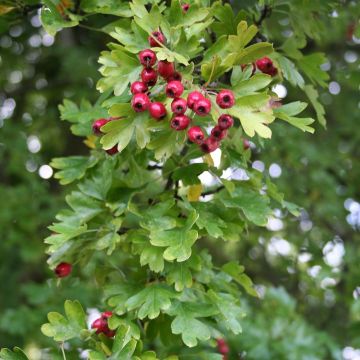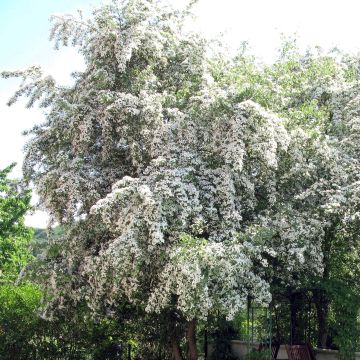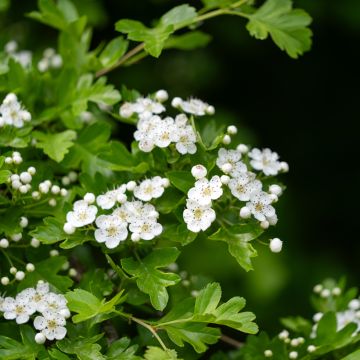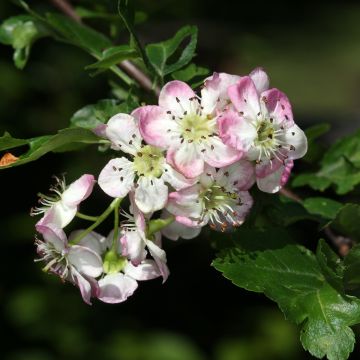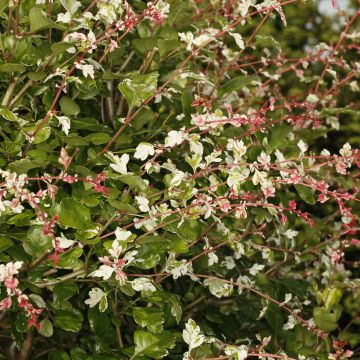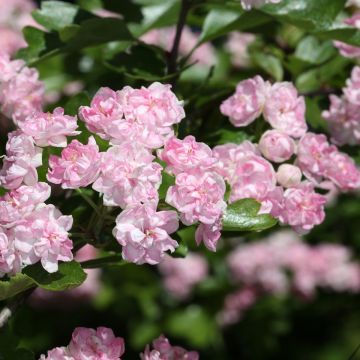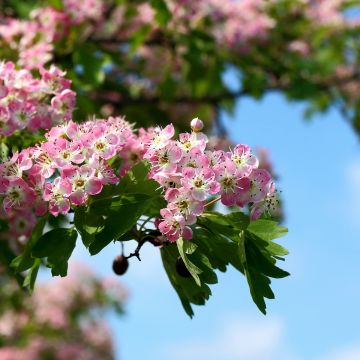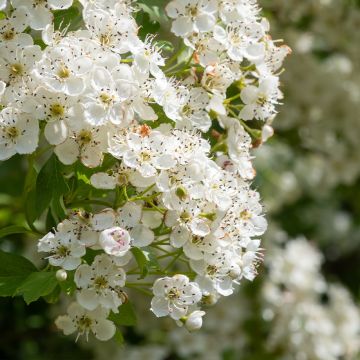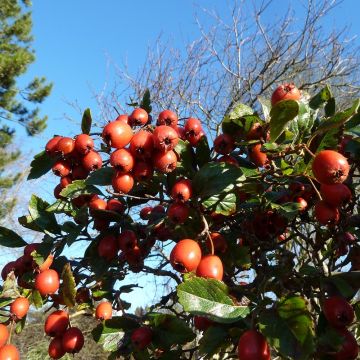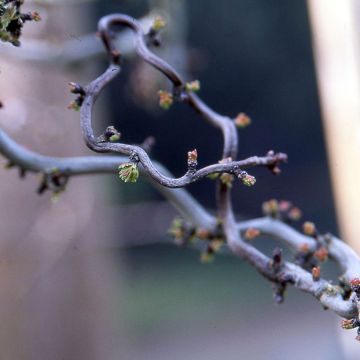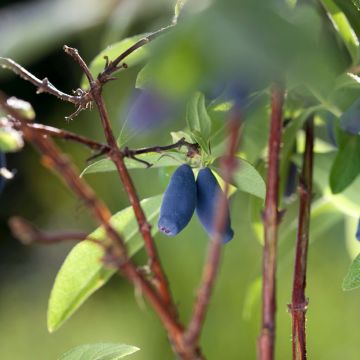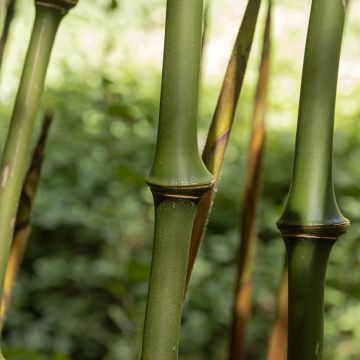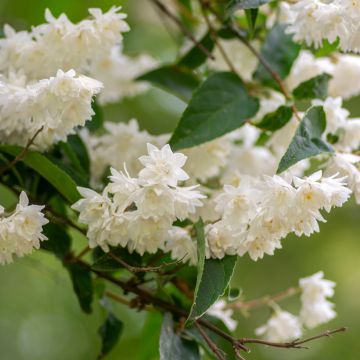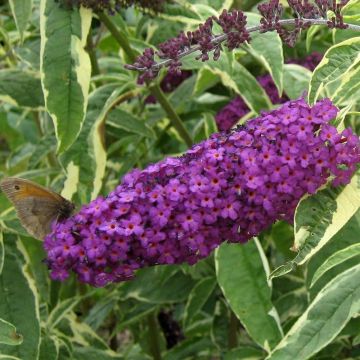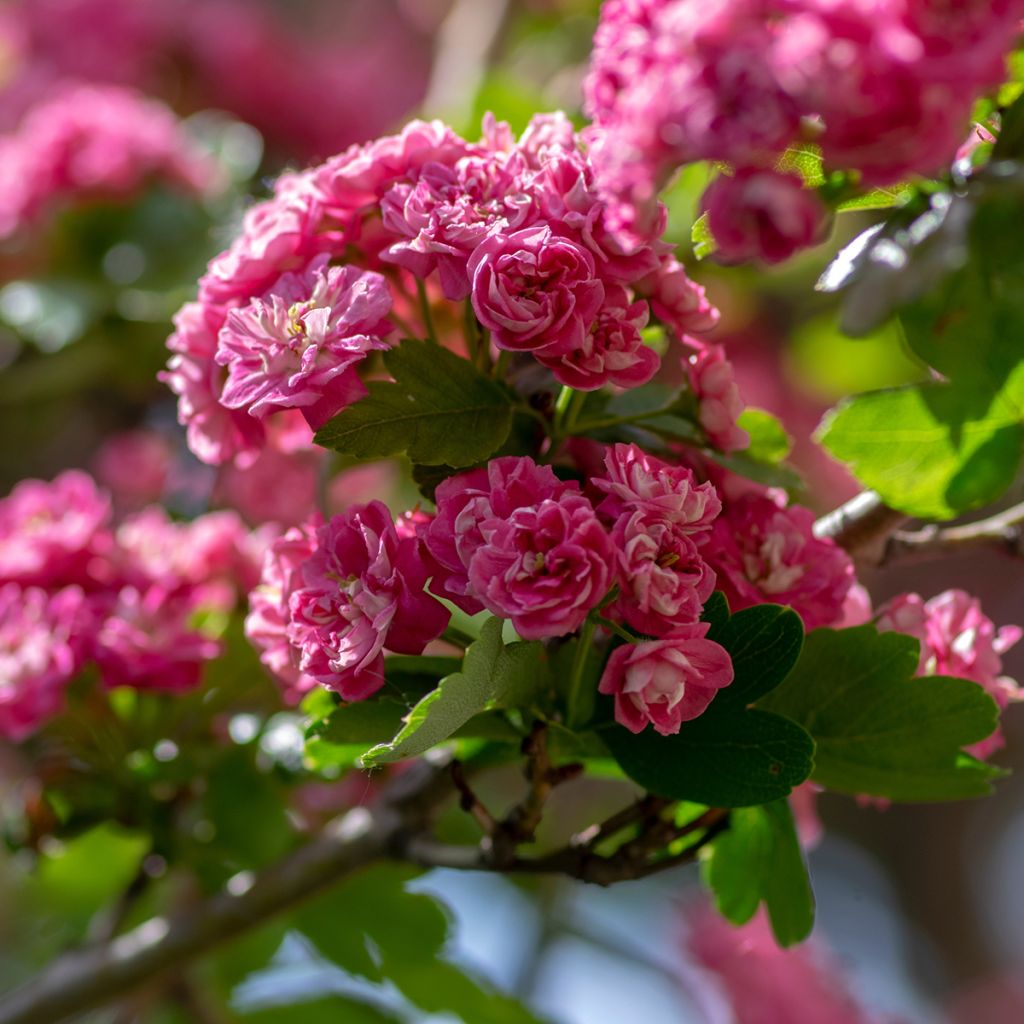

Crataegus laevigata Mutabilis Ravnholdt - Hawthorn
Crataegus laevigata Mutabilis Ravnholdt - Hawthorn
Crataegus laevigata Mutabilis Ravnholdt
Midland Hawthorn, English Hawthorn, Woodland Hawthorn
Special offer!
Receive a €20 voucher for any order over €90 (excluding delivery costs, credit notes, and plastic-free options)!
1- Add your favorite plants to your cart.
2- Once you have reached €90, confirm your order (you can even choose the delivery date!).
3- As soon as your order is shipped, you will receive an email containing your voucher code, valid for 3 months (90 days).
Your voucher is unique and can only be used once, for any order with a minimum value of €20, excluding delivery costs.
Can be combined with other current offers, non-divisible and non-refundable.
Why not try an alternative variety in stock?
View all →This plant carries a 24 months recovery warranty
More information
We guarantee the quality of our plants for a full growing cycle, and will replace at our expense any plant that fails to recover under normal climatic and planting conditions.
Would this plant suit my garden?
Set up your Plantfit profile →
Description
The Crataegus laevigata 'Mutabilis Ravnholdt' is a selection from the smooth hawthorn, also known as the two-style hawthorn or spiny hawthorn, a shrub species found in northern France. This form is sometimes referred to simply as 'Mutabilis'. Its flowering starts with a pale pink color and then turns to a grayish white. Its miniature rose-like flowers are double. They give way to small dark red fruits on a yellow autumn foliage. Aside from the flower color, 'Mutabilis' bears a strong resemblance to 'Paul's Scarlet'.
The Crataegus laevigata belongs to the Rosaceae family, just like the wild rose and plum. Although quite common in France, it is less so than its close relative Crataegus monogyna, the white hawthorn. 'Mutabilis Ravnholdt' forms a small tree or a large hardy bush that can reach 5 to 7 m (16 to 23ft) in height at maturity and 3 to 4 m (10 to 13ft) in width. Its habit is generally rounded, well-branched, with a wide crown. The stump can sucker, allowing it to spread in width. Its branches are equipped with extremely strong long thorns. They bear deciduous, alternate leaves measuring about 5 cm (2in) in length, ovate and lobed, of a shiny dark green color, turning yellow in autumn before falling. In early May, double flowers measuring about 2 cm (1in) in diameter grow in small tight clusters. They are pale pink and gradually fade to a grayish white. In September, birds feast on its red pear-shaped fruits, 2 cm (1in) in diameter, called haws. They are not edible.
The Crataegus laevigata 'Mutabilis Ravnholdt' is easily grown in well-drained and not overly dry soil, in a sunny or semi-shaded location. Not demanding, it will be satisfied with pruning in February to maintain balance. Plant it in a large bed, with shrubs with small flowers such as Deutzia and Kolkwitzia. Add lower shrubs and evergreen conifers. Also, plant it in a large hedge, wild or defensive. Appreciated by many insects, birds, and small mammals, it is the ultimate food plant. Take advantage of this to create an ecological hedge with other shrubs that provide shelter and food: Prunus spinosa, Sambucus nigra, and Viburnum opulus.
Report an error about the product description
Plant habit
Flowering
Foliage
Botanical data
Crataegus
laevigata
Mutabilis Ravnholdt
Rosaceae
Midland Hawthorn, English Hawthorn, Woodland Hawthorn
Cultivar or hybrid
Other Hawthorn Crataegus
View all →Planting and care
The Crataegus laevigata 'Mutabilis Ravnholdt' is preferably planted in autumn in any well-drained soil, even limestone, in a sunny or semi-shaded position. It only dislikes excessively arid climates. Not demanding, it will be satisfied with a pruning for balance in February. To form a hawthorn tree, reduce the bush to a single stem after planting. Then cut off all suckers where they emerge.
Planting period
Intended location
Care
This item has not been reviewed yet - be the first to leave a review about it.
Similar products
Haven't found what you were looking for?
Hardiness is the lowest winter temperature a plant can endure without suffering serious damage or even dying. However, hardiness is affected by location (a sheltered area, such as a patio), protection (winter cover) and soil type (hardiness is improved by well-drained soil).

Photo Sharing Terms & Conditions
In order to encourage gardeners to interact and share their experiences, Promesse de fleurs offers various media enabling content to be uploaded onto its Site - in particular via the ‘Photo sharing’ module.
The User agrees to refrain from:
- Posting any content that is illegal, prejudicial, insulting, racist, inciteful to hatred, revisionist, contrary to public decency, that infringes on privacy or on the privacy rights of third parties, in particular the publicity rights of persons and goods, intellectual property rights, or the right to privacy.
- Submitting content on behalf of a third party;
- Impersonate the identity of a third party and/or publish any personal information about a third party;
In general, the User undertakes to refrain from any unethical behaviour.
All Content (in particular text, comments, files, images, photos, videos, creative works, etc.), which may be subject to property or intellectual property rights, image or other private rights, shall remain the property of the User, subject to the limited rights granted by the terms of the licence granted by Promesse de fleurs as stated below. Users are at liberty to publish or not to publish such Content on the Site, notably via the ‘Photo Sharing’ facility, and accept that this Content shall be made public and freely accessible, notably on the Internet.
Users further acknowledge, undertake to have ,and guarantee that they hold all necessary rights and permissions to publish such material on the Site, in particular with regard to the legislation in force pertaining to any privacy, property, intellectual property, image, or contractual rights, or rights of any other nature. By publishing such Content on the Site, Users acknowledge accepting full liability as publishers of the Content within the meaning of the law, and grant Promesse de fleurs, free of charge, an inclusive, worldwide licence for the said Content for the entire duration of its publication, including all reproduction, representation, up/downloading, displaying, performing, transmission, and storage rights.
Users also grant permission for their name to be linked to the Content and accept that this link may not always be made available.
By engaging in posting material, Users consent to their Content becoming automatically accessible on the Internet, in particular on other sites and/or blogs and/or web pages of the Promesse de fleurs site, including in particular social pages and the Promesse de fleurs catalogue.
Users may secure the removal of entrusted content free of charge by issuing a simple request via our contact form.
The flowering period indicated on our website applies to countries and regions located in USDA zone 8 (France, the United Kingdom, Ireland, the Netherlands, etc.)
It will vary according to where you live:
- In zones 9 to 10 (Italy, Spain, Greece, etc.), flowering will occur about 2 to 4 weeks earlier.
- In zones 6 to 7 (Germany, Poland, Slovenia, and lower mountainous regions), flowering will be delayed by 2 to 3 weeks.
- In zone 5 (Central Europe, Scandinavia), blooming will be delayed by 3 to 5 weeks.
In temperate climates, pruning of spring-flowering shrubs (forsythia, spireas, etc.) should be done just after flowering.
Pruning of summer-flowering shrubs (Indian Lilac, Perovskia, etc.) can be done in winter or spring.
In cold regions as well as with frost-sensitive plants, avoid pruning too early when severe frosts may still occur.
The planting period indicated on our website applies to countries and regions located in USDA zone 8 (France, United Kingdom, Ireland, Netherlands).
It will vary according to where you live:
- In Mediterranean zones (Marseille, Madrid, Milan, etc.), autumn and winter are the best planting periods.
- In continental zones (Strasbourg, Munich, Vienna, etc.), delay planting by 2 to 3 weeks in spring and bring it forward by 2 to 4 weeks in autumn.
- In mountainous regions (the Alps, Pyrenees, Carpathians, etc.), it is best to plant in late spring (May-June) or late summer (August-September).
The harvesting period indicated on our website applies to countries and regions in USDA zone 8 (France, England, Ireland, the Netherlands).
In colder areas (Scandinavia, Poland, Austria...) fruit and vegetable harvests are likely to be delayed by 3-4 weeks.
In warmer areas (Italy, Spain, Greece, etc.), harvesting will probably take place earlier, depending on weather conditions.
The sowing periods indicated on our website apply to countries and regions within USDA Zone 8 (France, UK, Ireland, Netherlands).
In colder areas (Scandinavia, Poland, Austria...), delay any outdoor sowing by 3-4 weeks, or sow under glass.
In warmer climes (Italy, Spain, Greece, etc.), bring outdoor sowing forward by a few weeks.































